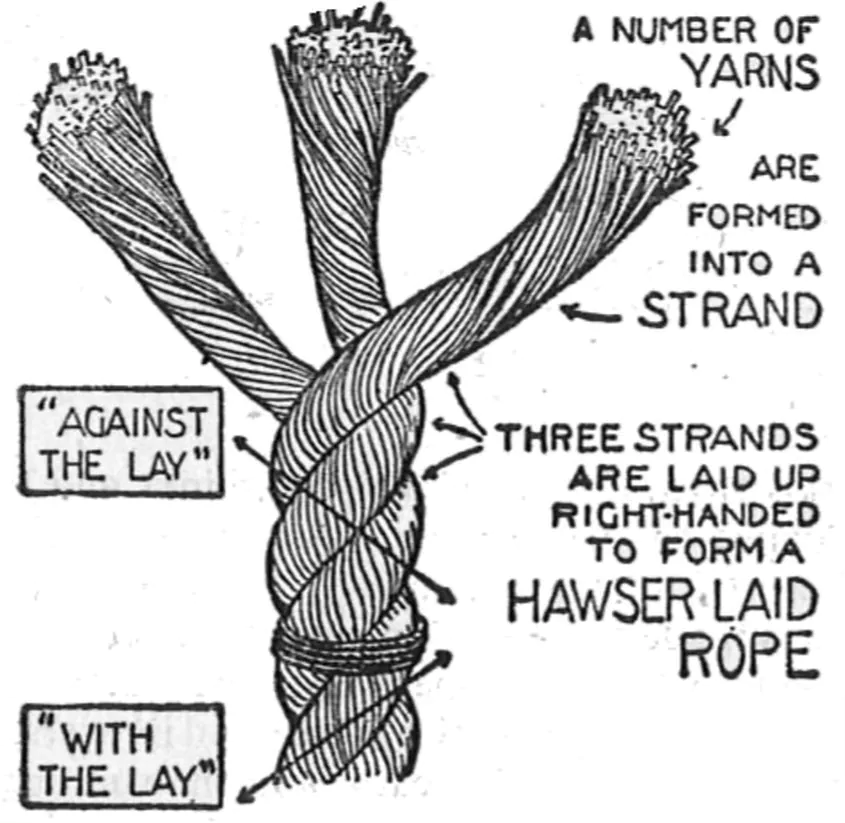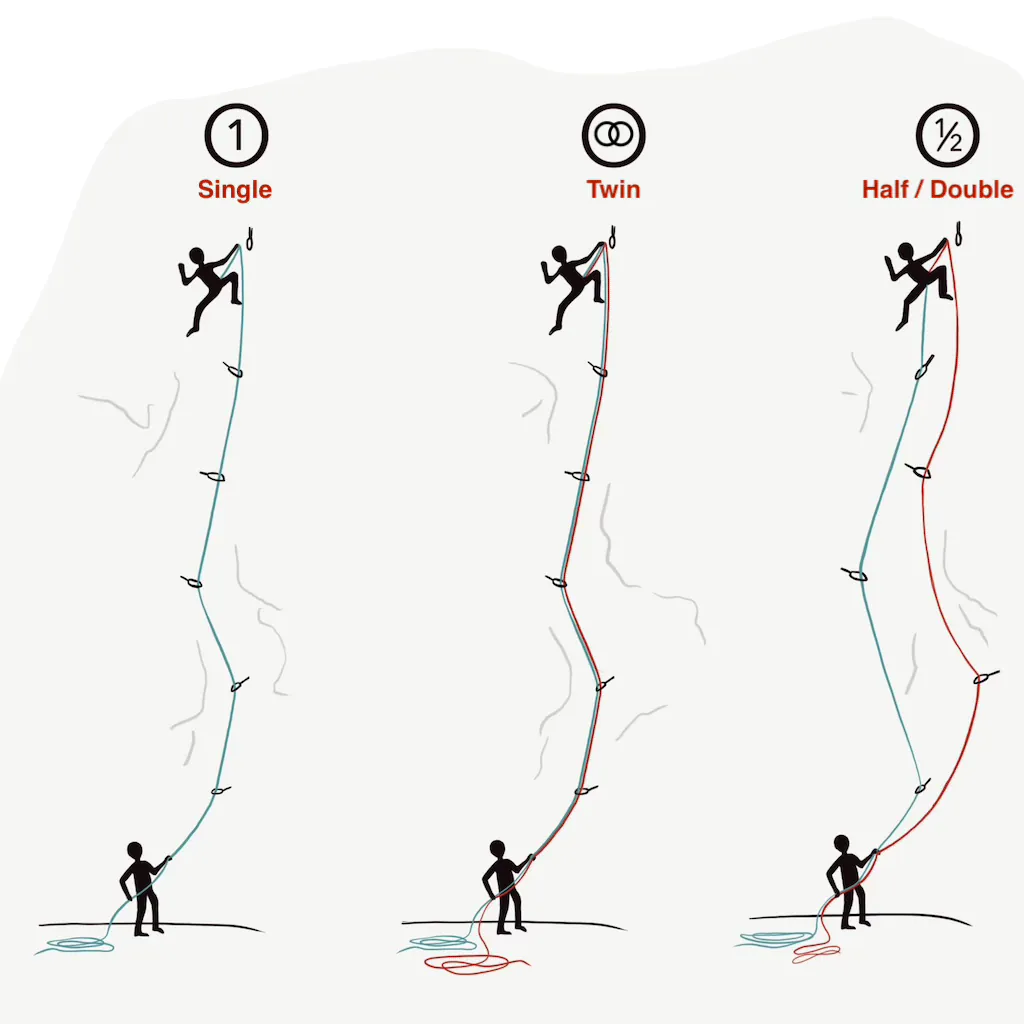Rope
little history
Rope was used by climbers long before hardware was developed, but it was simple and typically made of animal or plant fibers that were either woven by hand or spun using a Cordelier. Ropes made by hand lacked uniformity, had low strength to weight ratio, poor durability, were stiff and had no stretch. They were spiral-braided, which made them strong but hard to manage. They would untwist and often made situations dangerous.
DuPont Chemical Company invented nylon in 1935 and it was first used in climbing ropes in America in the early 1940s. Militaries started to use nylon ropes in WWII, and they were introduced to Europe in the mid to late 1940s. The nylon ropes were more elastic, aiding in fall protection. Machines evolved to allow for tighter, more consistent weaves and stronger ropes.

Modern rope anatomy
In 1953 the German company Edelrid created the kernmantle design, which placed a strong synthetic rope core within a braided nylon sheath. They increased elasticity and strength, and solved issues with untwisting and rope wear. The kernmantle rope became an industry standard and remains such today. In 1964, Edelrid and Mammut developed dynamic ropes capable of withstanding multiple falls - they became the forerunner of the modern dynamic climbing rope.
Construction begins with nylon filaments being spun into yarn. Then yarns are twisted to form a ply, several of which are twisted together to form a bundle. Several of these bundles form the core, or kern of the rope. A nylon sheath (mantle) is then braided around the core.

Climbing rope types
Dynamic ropes for climbing are divided into three categories:
- Single ropes,
- Twin ropes, and
- Half / Double ropes.
Depending on their use, each of the rope types have certain advantages in terms of safety and handling or are needed for certain climbing techniques.
Single ropes are often triple-rated, meaning, that they can be used in a single, twin or half rope configuration. Twin and half ropes are often double-rated, following the same logic.

Single rope
Single ropes are the toughest, most common and simplest to use. One rope is used in the system and is rated to hold multiple falls. With a single rope, the leader clips the rope in each piece of protection and the belayer has only one rope to manage. A belayer can also use an assisted braking belay device (like Petzl Grigri), which can only accommodate a single rope. Single ropes are the best choice for the majority of climbing disciplines, and depending on the diameter and features, can be used for trad, sport, ice, alpine, gym and big wall. The downside to a single rope system is the need for a second rope for full-length rappels and the lack of redundancy, as well as larger weight. Some wandering routes may require lots of long slings to mitigate rope drag, unless using a half rope system.
Twin rope
The twin rope setup is designed to be used with two ropes in tandem. The climber ties into both ropes and clips both ropes into each piece of protection, identically to how it would be done with a single rope. This is advantageous because having two ropes enables the climber to have full-length rappels and provides added safety and redundancy in the event of one rope getting compromised.
Unless they are double-rated (Twin & Half / Double), twin ropes are not designed to be used independently, meaning they must always be used as a pair. They are the lightest and thinnest (as low as 6.9mm) double ropes, making them ideal for alpine climbing.
Half / Double rope
A more complex rope method is the half rope system. As with Twin ropes, in this setup both climbers are required to tie into both ropes. Each strand of a half rope is rated to hold a fall on its own, but with a lower weight in tests. They are also thinner and lighter than single ropes, making them less durable and less likely to sustain repeated hard falls. In application, the leader will alternate clipping the two ropes, providing redundancy and reducing rope drag. This system is the most complicated to learn and can lead to hassles in rope management but is a great system for routes that require thoughtful protection.